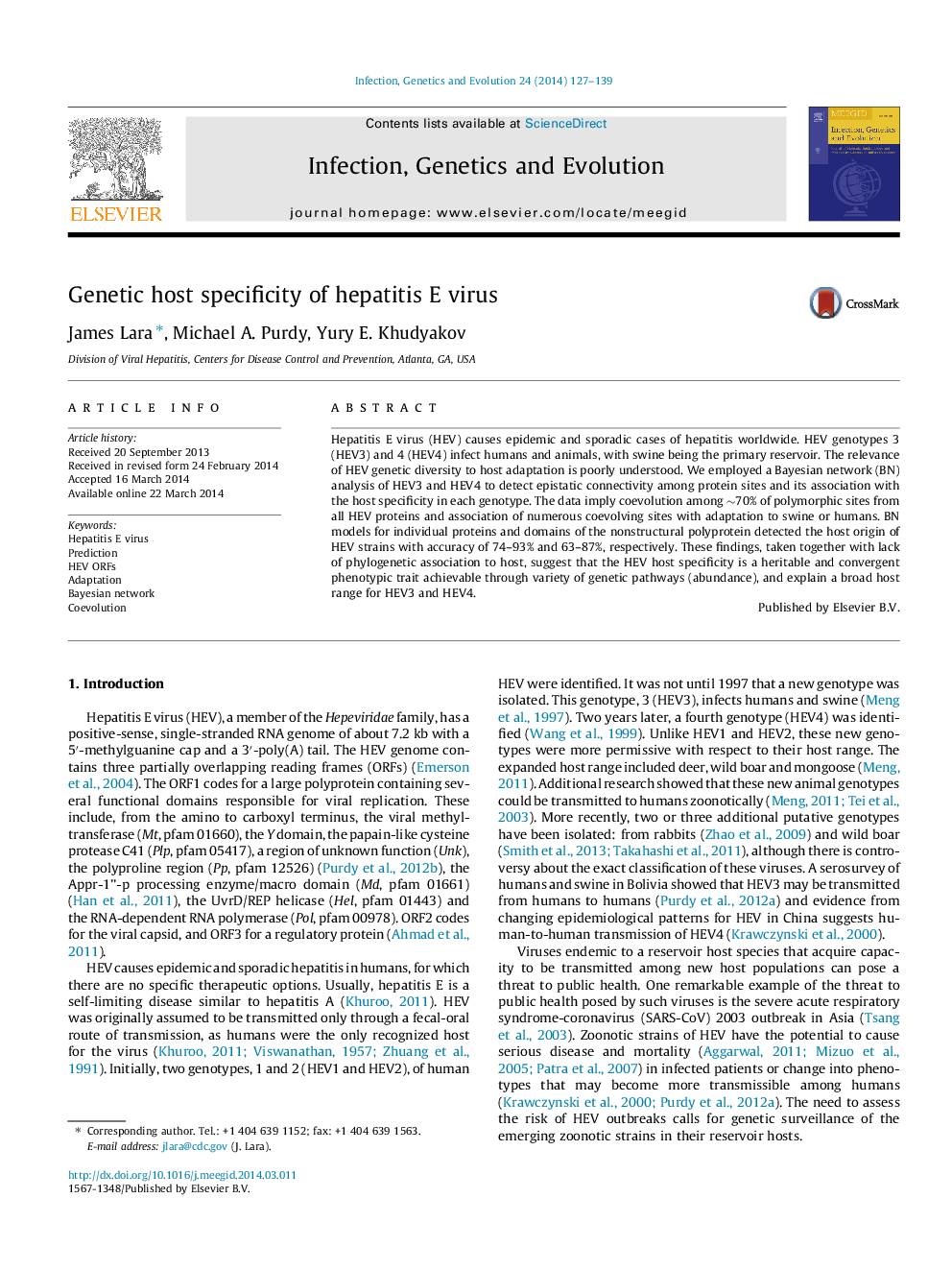| Article ID | Journal | Published Year | Pages | File Type |
|---|---|---|---|---|
| 5909710 | Infection, Genetics and Evolution | 2014 | 13 Pages |
â¢We modeled host specificity of hepatitis E virus, genotypes 3 and 4 (HEV3 & HEV4).â¢Epistasis among HEV protein sites was modeled using Bayesian Networks.â¢Host-specific dependencies among coevolving HEV protein sites were observed.â¢Coevolving sites associating HEV3 & HEV4 strains to host of origin are reported.â¢Host specificity is a convergent and abundant trait in HEV3 & HEV4.
Hepatitis E virus (HEV) causes epidemic and sporadic cases of hepatitis worldwide. HEV genotypes 3 (HEV3) and 4 (HEV4) infect humans and animals, with swine being the primary reservoir. The relevance of HEV genetic diversity to host adaptation is poorly understood. We employed a Bayesian network (BN) analysis of HEV3 and HEV4 to detect epistatic connectivity among protein sites and its association with the host specificity in each genotype. The data imply coevolution among â¼70% of polymorphic sites from all HEV proteins and association of numerous coevolving sites with adaptation to swine or humans. BN models for individual proteins and domains of the nonstructural polyprotein detected the host origin of HEV strains with accuracy of 74-93% and 63-87%, respectively. These findings, taken together with lack of phylogenetic association to host, suggest that the HEV host specificity is a heritable and convergent phenotypic trait achievable through variety of genetic pathways (abundance), and explain a broad host range for HEV3 and HEV4.
